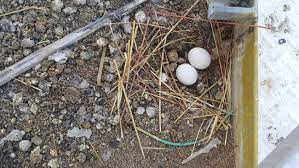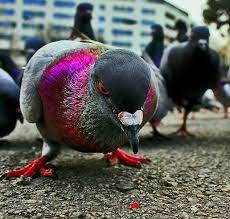
by Pigeon Patrol | Jun 7, 2021 | Bird Law, Bird Netting, Bird Spikes, Pigeon Spikes, Pigeons, Pigeons in the News
Last September, as part of Twitter’s #PoweredByTweets exhibition at Somerset House in the UK, a proposal called ‘Pigeon Patrol’ was presented. The idea was this: armed with pollution monitors in tiny backpacks, pigeons would Tweet live pollution data from the skies of London.
It seems a little far-fetched – I mean, a pigeon can’t actually tweet, obviously – but the concept was one of the standouts of the competition. And now, ‘Pigeon Patrol’ is officially live, with a team of flying pollution monitors at work, tweeting back data from around the city.

“Over the course of three days, Plume Labs (@Plume_Labs) and DigitasLBi (@DigitasLBi_UK) will release ten pigeons wearing small pollution-monitoring backpacks. These lightweight pollution sensors, created by Plume, are stitched onto small fabric vests which fit comfortably on the pigeons and measure levels of nitrogen dioxide and ozone, the main gases behind harmful urban air pollution.”
The idea is one of the more interesting and innovative ways of using Twitter data, and it underlines the capacity of the platform as a real-time news and update service. Pigeon Patrol was one of several ideas to spark new conversations around how Twitter can be used for such purpose – others included Guys and St Thomas’ Hospital, which created a chemotherapy ward with Tweet-powered visualizations and WaterAid, which developed a water pump that Tweeted donors with live updates of where their money was going.
It’s in that capacity for real, immediate updates that Twitter holds such great value and potential. And it’s not just in terms of world events and breaking news – the more intimate and geographically targeted Twitter alerts and tracking can be the better. We’ve already seen examples of how tweets can be used to better predict earthquakes or map the path of destruction from hurricanes. Imagine if you could use tweets to get a better understanding of local traffic concerns as they happen, to track petrol prices or supermarket offers nearby? These are relatively basic, by comparison, but the underlying principle is that Twitter’s real-time stream is extremely valuable for such purpose – more so than the algorithm defined News Feed of Facebook.
The main requirement for such application, of course, is Twitter use – more people using the platform means more data, which, again, is why Twitter’s current growth issues flag a concern for the ongoing viability of the service. Right now, Twitter’s used by enough people to be an indicative measure of most large-scale events. But micro-trends – those smaller, localized alerts – would require higher concentrations of local users in order to be effective. There are examples of this type of process in action – in Spain, the town of Jun is effectively governed via tweet, for example – and as the next generation of digital natives grows up, Twitter use is likely to become more prominent. But the issue does underline, once again, why Twitter needs more people tweeting, and why ongoing growth is such a big focus for the platform.
For now, we’ll have to settle for pollution tracking pigeons, flying around London in teams of 10 and tweeting back updates.
Source
Pigeon Patrol Products & Services is the leading manufacturer and distributor of bird deterrent (control) products in Canada. Pigeon Patrol products have solved pest bird problems in industrial, commercial, and residential settings since 2000, by using safe and humane bird deterrents with only bird and animal friendly solutions. At Pigeon Patrol, we manufacture and offer a variety of bird deterrents, ranging from Ultra-flex Bird Spikes with UV protection, Bird Netting, 4-S Bird Gel and the best Ultrasonic and audible sound devices on the market today.
Voted Best Canadian wholesaler for Bird Deterrent products ten years in a row.
Contact us at 1- 877– 4– NO-BIRD, (604) 585-9279 or visit our website at www.pigeonpatrol.ca
Pigeon/Pigeon Patrol / Pigeons Roosting / Vancouver Pigeon Control /Bird Spikes / Bird Control / Bird Deterrent / Pigeon Deterrent? Surrey Pigeon Control / Pest /Seagull deterrent / Vancouver Pigeon Blog / Birds Inside Home / Pigeons in the cities / Ice Pigeons/ What to do about pigeons/ sparrows , Damage by Sparrows, How To Keep Raccoons Away, Why Are Raccoons Considered Pests/ De-fence / Pigeon Nesting/ Bird Droppings / Pigeon Dropping/ woodpecker control/ Professional Bird Control Company/ Keep The Birds Away/ Birds/rats/ seagull/pigeon/woodpecker/ dove/sparrow/pidgeon control/pidgeon problem/ pidgeon control/flying rats/ pigeon Problems/ bird netting/bird gel/bird spray/bird nails/ bird guard
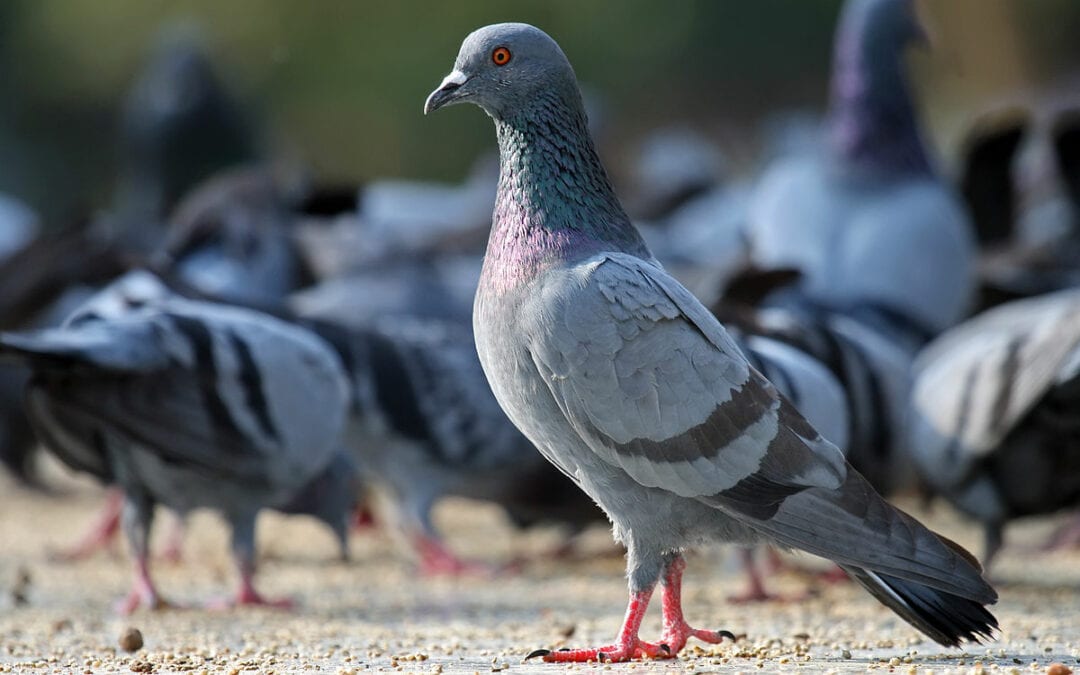
by Pigeon Patrol | May 31, 2021 | Bird Netting, Bird Spikes, Columbidae, history of pigeons, MBCA, Pigeons, Pigeons in the News
CHICAGO – A pigeon apparently didn’t think much of a lawmaker’s ideas to address a messy situation at a Chicago Transit Authority stop known by some as “pigeon poop station.”
WBBM-TV reports that one of the birds did its business on the head of Democratic state Rep. Jaime Andrade as he was discussing the problem with a reporter outside of the Irving Park Blue Line station.
During the interview, Andrade rubbed the top of his head and said, “I think they just got me.” They did.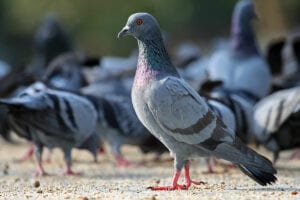
The sidewalks outside of the station are covered in bird waste and feathers.
Andrade has been trying to fix the problem. One of his ideas is to ask the CTA to install a hose line for power washing when it constructs new escalators at the stop.
Pigeon Patrol Products & Services is the leading manufacturer and distributor of bird deterrent (control) products in Canada. Pigeon Patrol products have solved pest bird problems in industrial, commercial, and residential settings since 2000, by using safe and humane bird deterrents with only bird and animal friendly solutions. At Pigeon Patrol, we manufacture and offer a variety of bird deterrents, ranging from Ultra-flex Bird Spikes with UV protection, Bird Netting, 4-S Bird Gel and the best Ultrasonic and audible sound devices on the market today.
Voted Best Canadian wholesaler for Bird Deterrent products ten years in a row.
Contact us at 1- 877– 4– NO-BIRD, (604) 585-9279 or visit our website at www.pigeonpatrol.ca
Pigeon/Pigeon Patrol / Pigeons Roosting / Vancouver Pigeon Control /Bird Spikes / Bird Control / Bird Deterrent / Pigeon Deterrent? Surrey Pigeon Control / Pest /Seagull deterrent / Vancouver Pigeon Blog / Birds Inside Home / Pigeons in the cities / Ice Pigeons/ What to do about pigeons/ sparrows , Damage by Sparrows, How To Keep Raccoons Away, Why Are Raccoons Considered Pests/ De-fence / Pigeon Nesting/ Bird Droppings / Pigeon Dropping/ woodpecker control/ Professional Bird Control Company/ Keep The Birds Away/ Birds/rats/ seagull/pigeon/woodpecker/ dove/sparrow/pidgeon control/pidgeon problem/ pidgeon control/flying rats/ pigeon Problems/ bird netting/bird gel/bird spray/bird nails/ bird guard
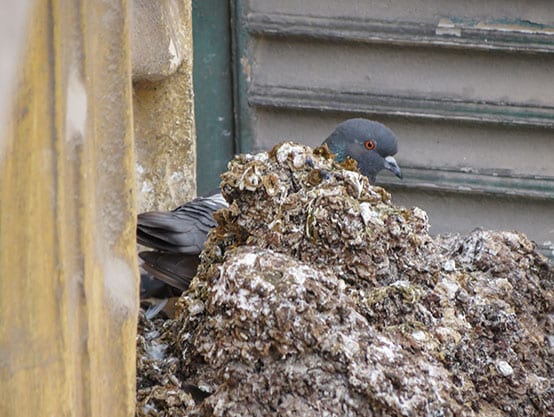
by Pigeon Patrol | May 31, 2021 | 4-S Gel Bird repellent, Animal Deterrent Products, Bird Deterrent Products, Bird Law, Pigeons, Raccoons, Sparrows, UltraSonic Bird Control
There’s been a few charges laid around town but there is one individual who is causing more headaches than normal
The pigeon problem in Kirkland Lake is so bad, police felt the need to issue a news release this morning warning residents to follow the law when dealing with them.
The town started renting out traps to residents today to capture pigeons, and police say that trappers will be responsible for the disposal of the birds, which includes a ban on throwing them in the garbage for curbside pickup. Successful trappers will instead have to take the pigeons for burial at the town dump.
“The OPP want to inform the residents that it is each individual’s responsibility to educate themselves on this topic and to ensure that they are acting within the laws, regulations and town by-laws,” says Constable Adam Gauthier.
The problem started, says Ashley Bilodeau, Kirkland Lake’s Manager of Planning and Land Development, when a few bird lovers started feeding the pigeons.
“We have a couple of residents that have been obnoxiously feeding pigeons to the point where we have some serious problem areas, so we passed a no-feeding bylaw back in the fall,” she told BayToday. “However, there is one individual who just continues to feed them despite the bylaw and has been charged. There’s been a few charges laid around town but there is one individual who is causing more headaches than normal.”
The fine for feeding is steep at $100, and that’s down from the $250 the town wanted to charge but the province wouldn’t allow it.
“So we’re trying to find different ways to combat the issue because it’s now causing problems to people’s properties and vehicles because there are so many of them.”
Bilodeau says the town has checked with the MNRF and it’s not illegal to kill pigeons although you are required to have a small game licence in order to trap and kill pigeons.
The town has not placed a limit on the number of pigeons people can capture, but police warn folks can’t use their guns to shoot the birds because discharging a firearm is prohibited within the Town of Kirkland Lake,
Bilodeau says poop is the problem.
“They’re also causing damage to buildings by trying to build nesting areas,” she adds. “We’ve got four traps here and people can come in and put in a deposit and take the trap for 10 days, and when they bring it back they get their money back.”
Pigeons were originally bred from the wild rock dove, which naturally inhabits sea-cliffs and mountains according to Wikipedia, so the bird finds the ledges of buildings to be a substitute for sea cliffs.
They have become abundant in towns and cities throughout the world. Due to their abilities to create large amounts of excrement and to carry disease, combined with crop and property damage, pigeons are largely considered a nuisance with steps being taken in many municipalities to lower their numbers or completely eradicate them.
Source
Pigeon Patrol Products & Services is the leading manufacturer and distributor of bird deterrent (control) products in Canada. Pigeon Patrol products have solved pest bird problems in industrial, commercial, and residential settings since 2000, by using safe and humane bird deterrents with only bird and animal friendly solutions. At Pigeon Patrol, we manufacture and offer a variety of bird deterrents, ranging from Ultra-flex Bird Spikes with UV protection, Bird Netting, 4-S Bird Gel and the best Ultrasonic and audible sound devices on the market today.
Voted Best Canadian wholesaler for Bird Deterrent products ten years in a row.
Contact us at 1- 877– 4– NO-BIRD, (604) 585-9279 or visit our website at www.pigeonpatrol.ca
Pigeon/Pigeon Patrol / Pigeons Roosting / Vancouver Pigeon Control /Bird Spikes / Bird Control / Bird Deterrent / Pigeon Deterrent? Surrey Pigeon Control / Pest /Seagull deterrent / Vancouver Pigeon Blog / Birds Inside Home / Pigeons in the cities / Ice Pigeons/ What to do about pigeons/ sparrows , Damage by Sparrows, How To Keep Raccoons Away, Why Are Raccoons Considered Pests/ De-fence / Pigeon Nesting/ Bird Droppings / Pigeon Dropping/ woodpecker control/ Professional Bird Control Company/ Keep The Birds Away/ Birds/rats/ seagull/pigeon/woodpecker/ dove/sparrow/pidgeon control/pidgeon problem/ pidgeon control/flying rats/ pigeon Problems/ bird netting/bird gel/bird spray/bird nails/ bird guard
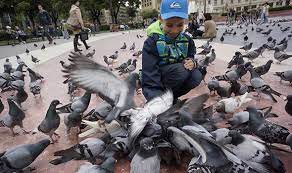
by Pigeon Patrol | May 31, 2021 | pet bird, Pigeon Control, Pigeon Droppings, Pigeon Patrol's Services, Pigeons, Pigeons in the News, Sparrows
Hair, string tangled around birds’ feet can cut off circulation to toes and whole feet
Pigeons with injured feet or missing toes are a common sight in downtown Victoria, says one resident who’s taken matters into her own hands by catching them and cleaning their feet.
Pippin Griffin carries around a collapsible guinea pig cage, Epsom salts, a sterile first aid kit and hand sanitizer when she makes time — roughly once every three weeks — to help pigeons suffering from stringfoot.
Stringfoot is when birds get string, human hair or wire wrapped around their feet, cutting off circulation. It can cause a toe or entire foot to fall off.
Griffin first noticed birds with abrasions and open sores on their feet about four years ago when she started feeding them seeds regularly. Realizing she had a first aid kit in her bag, she knew she could help. Since then, Griffin estimates she’s helped more than 100 pigeons and has upped her system of care.
Now, depending on how much time she has, Griffin will fill the bottom of the cage with a little bit of water and Epsom salt to let the bird soak. Using food to entice the bird, she’ll catch it and slip a sock with the toes cut off over the bird to stop it from flapping its wings and stressing out. Griffin will then take the bird onto her lap, gently using small scissors to cut away the string, twine or hair and then using tweezers, she’ll remove any of the remaining debris.
“Sometimes I wear gloves for this, but for the most part I would just be sanitizing my hands often and not touching my face,” she says, adding that the gloves can get in the way sometimes and make it hard to grip.
Andrea Wallace from The BCSPCA Wild Animal Rehabilitation Centre (Wild ARC) says they don’t recommend touching or feeding any wild animals.

“We want to keep them wild,” she says, adding that if you see a bird with stringfoot to bring it to Wild ARC so they can treat it, although she would not say how the staff would help the animal. “That’s not how we would do it, and I won’t describe how we would do it because we don’t want anyone to do that,” she says.
For Griffin, it’s a sense of responsibility that keeps her going out.
“I just think it’s kind of sad, so many people think pigeons are gross and hate them,” says Griffin. “This is why they live near — they trust us and see [the city] as home.”
Griffin says the pigeons can even recognize her.
“It’s not like they say ‘hey it’s you’ or anything, but eventually they know what you’re up to after a while,” she says.
Eventually, she’d like to pursue a career in wildlife rehabilitation to put her experience to use.
Source
Pigeon Patrol Products & Services is the leading manufacturer and distributor of bird deterrent (control) products in Canada. Pigeon Patrol products have solved pest bird problems in industrial, commercial, and residential settings since 2000, by using safe and humane bird deterrents with only bird and animal friendly solutions. At Pigeon Patrol, we manufacture and offer a variety of bird deterrents, ranging from Ultra-flex Bird Spikes with UV protection, Bird Netting, 4-S Bird Gel and the best Ultrasonic and audible sound devices on the market today.
Voted Best Canadian wholesaler for Bird Deterrent products ten years in a row.
Contact us at 1- 877– 4– NO-BIRD, (604) 585-9279 or visit our website at www.pigeonpatrol.ca
Pigeon/Pigeon Patrol / Pigeons Roosting / Vancouver Pigeon Control /Bird Spikes / Bird Control / Bird Deterrent / Pigeon Deterrent? Surrey Pigeon Control / Pest /Seagull deterrent / Vancouver Pigeon Blog / Birds Inside Home / Pigeons in the cities / Ice Pigeons/ What to do about pigeons/ sparrows , Damage by Sparrows, How To Keep Raccoons Away, Why Are Raccoons Considered Pests/ De-fence / Pigeon Nesting/ Bird Droppings / Pigeon Dropping/ woodpecker control/ Professional Bird Control Company/ Keep The Birds Away/ Birds/rats/ seagull/pigeon/woodpecker/ dove/sparrow/pidgeon control/pidgeon problem/ pidgeon control/flying rats/ pigeon Problems/ bird netting/bird gel/bird spray/bird nails/ bird guard

by Pigeon Patrol | May 31, 2021 | Bird Deterrent Products, Bird Law, Bird Netting, Bird Spikes, MBCA, pet bird, Pigeons, Pigeons in the News, Raccoons
Breakfast reporter Wilson Longhurst tried his best to report the unusual story of a pigeon arrested in India on suspicion of spying, but he couldn’t quite hold it together today.
The Times of India reports the bird was captured around the time of the Eid festival by villagers along the border of Pakistan and India in Jammu and Kashmir.
They handed the bird, which had been painted pink and carried a numbered band around its leg, to police, on suspicion of spying.

Police were concerned that the numbers could be a “coded message”, officials told the Times of India, and an investigation was launched.
As Longhurst reported the story on Breakfast, he did his best to remain solemn, but lost it as he reported that the owner of the pigeon in neighbouring Pakistan has appealed for the bird’s release, saying the number on it’s leg is simply his phone number.
The villager told Pakistan’s Dawn newspaper that he owns more than a dozen pigeons, that they are a “symbol of peace” and that India should “refrain from victimising innocent birds”.
And it’s not the first time – Indian authorities caught a bird in 2015 that was found to have a message written on its wings in Urdu, and in 2016 a bird was found carrying a note allegedly threatening Indian Prime Minister Narendra Modi.
Source
Pigeon Patrol Products & Services is the leading manufacturer and distributor of bird deterrent (control) products in Canada. Pigeon Patrol products have solved pest bird problems in industrial, commercial, and residential settings since 2000, by using safe and humane bird deterrents with only bird and animal friendly solutions. At Pigeon Patrol, we manufacture and offer a variety of bird deterrents, ranging from Ultra-flex Bird Spikes with UV protection, Bird Netting, 4-S Bird Gel and the best Ultrasonic and audible sound devices on the market today.
Voted Best Canadian wholesaler for Bird Deterrent products ten years in a row.
Contact us at 1- 877– 4– NO-BIRD, (604) 585-9279 or visit our website at www.pigeonpatrol.ca
Pigeon/Pigeon Patrol / Pigeons Roosting / Vancouver Pigeon Control /Bird Spikes / Bird Control / Bird Deterrent / Pigeon Deterrent? Surrey Pigeon Control / Pest /Seagull deterrent / Vancouver Pigeon Blog / Birds Inside Home / Pigeons in the cities / Ice Pigeons/ What to do about pigeons/ sparrows , Damage by Sparrows, How To Keep Raccoons Away, Why Are Raccoons Considered Pests/ De-fence / Pigeon Nesting/ Bird Droppings / Pigeon Dropping/ woodpecker control/ Professional Bird Control Company/ Keep The Birds Away/ Birds/rats/ seagull/pigeon/woodpecker/ dove/sparrow/pidgeon control/pidgeon problem/ pidgeon control/flying rats/ pigeon Problems/ bird netting/bird gel/bird spray/bird nails/ bird guard

by Pigeon Patrol | May 25, 2021 | Bird Law, Bird Spikes, Doves, Pigeon Spikes, Pigeons
Most of the pigeons you see around a city, building, bridge, billboard or other structure, are pigeons that were born and raised close by. A few may be “vagrants” and constantly on the move, but most of them are going to be your neighborhood pigeons that will be nesting and breeding near to where you see them if food and water is close by.
Feral pigeons (Columbia livia) are the number one urban pest bird, causing damage where ever they nest or roost. Pigeons are descendants of domesticated European homing pigeons or Rock Doves, so they have a varied diet and feel at ease making their homes in man-made structures. Generally blue-grey in color, with iridescent feathers on the head and neck, pigeons often have markings in black, white or brown on the wings and neck. A short neck and small head characterize the standard pigeon; their short legs, hind toes and level front allow for both easy perching on pipes and ledges or walking on flat surfaces. Pigeons generally nest in small, flat areas away from the ground such as building ledges, air conditioning units or window sills.
Pigeons will inhabit any area that will offer them shelter from the climate, for example: architectural features of buildings, lofts, church steeples, attics, and any place with openings that allow for roosting, loafing, and nesting. Pigeon nests consist of twigs, sticks, and grass clumped together to form a platform. Pigeons are monogamous birds. “Eight to twelve days after mating, the female will lay 1 or 2 eggs which hatch after approximately 18 days. The male, during this time, is providing nesting material and guards the female and the nest.” When pigeons are born, they feed on pigeon milk which is “a liquid/solid substance secreted in the crop of both adults that is regurgitated” into the mouths of the young pigeons. Most young leave the nest at approximately 4 to 6 weeks of age. During this time another batch of eggs may have already been laid. Breeding most commonly occurs during the spring and fall, but reproduction can occur all year long. A flock of pigeons will normally have an equal amount of males and females. A pigeon’s normal lifespan in nature is about 3 to 4 years.
A pigeon can go, if necessary, a long time without food or even water. Most birds need a constant water source and that they will visit every day. Pigeons are skilled in finding water and food sources, and rarely have trouble finding a source in the city. Individual pigeons can have a home range of 150 miles, although most will stay close to home, which is generally considerably less than 25 miles or so. If their food and water sources change drastically, however, they will migrate, to another spot, near or far, with better provisions.
Damage caused by Pigeon Problems
Pigeon control is important due to the damage and disease problems these birds often create, check out Health Risk page. The uric acid in pigeon feces is highly corrosive and can cause extensive damage to metals and other substrates it sits on for long periods. Debris from flocks of problem pigeons often build up, backing up gutters and drains which can cause flooding and roof damage. Nesting materials and other debris has caused failures in machinery, especially rooftop air conditioning units which are a prime nesting spot for pigeons. Other frequent pigeon problems include slip and fall liability from feces or debris, plus an unclean, dirty company image is presented when pigeons are roosting all over a building or store front sign. The bacteria, fungal agents and ectoparasites found in pigeon droppings are responsible for a host of serious diseases, including histoplasmosis, encephalitis, salmonella, meningitis, toxoplasmosis and more. Pigeons also carry ectoparasites for example: fleas, lice, mites, ticks, and other biting pests. Many companies have significant clean up costs due to the pigeon problems that they don’t resolve. The pigeons that are located around airports threaten human safety due to a possible bird-aircraft collision. The U.S. Air Force considers pigeons as a medium priority hazard to jet aircrafts.
FLYING RATS ?
In today’s world, the common structure-dwelling pigeons have become the avian equivalents of city rodents. “Flying Rats,” as they have been described. Unfortunately, they have been forced into this role by man, as much as by their own natural instincts and habits. First and foremost to the problem of overpopulation, are the numbers of nooks and crannies that modern man builds into the exterior of all of his structures, forming the basic nesting home sites for pigeons and other birds. This means that almost every house, commercial building, bridge, billboard, gas canopy, or other large structure harbors a number of these potential nest or roosting sites. Bad for us, good for the pigeon.
Although pigeons are not very smart, they are creatures of habit and will try to return to the same places as before looking for a way back into it’s old nest site of favorite roosting spot, that’s call bird pressure.

Pigeons also become habituated to humans, by being extensively fed by humans, as in outdoor eating restaurants, parks and schools which only aggravates the problem. Pigeons, domesticated for thousands of years, are easily tamed and handled by humans. It is important to note that NO wild animals, including wild pigeons, should be fed, at any time, for any reason, by anyone.
Pigeon Control Products
The best pigeon control product is 2″ or 3/4” bird netting. Bird net is extremely durable and creates a true bird barrier against problem pigeons “homing” to their natural instinct to stay near their birth site. Pigeon netting completely controls pigeon problems, forcing the birds to look elsewhere for a nesting site.
In addition to bird net, other very effective bird control and pigeon control products are electrical shock track , bird spike, chemical bird control aversion hazing systems, OvoControl -birth control for pigeons, bird control post and wire systems and many other products. These pigeon control or bird control products work best where pigeons are nesting or roosting and the pigeons are “homing” (committed to remaining at the site). For pigeon problem areas where the birds are not nesting live catch pigeon traps can be an effective pigeon control method.
TOXICANTS AND POISONS
In certain areas, the use of a toxicant for pigeons is allowed for the control of pigeons. There are several types, the two most often used is a product with the brand name of “Avitrol”.
Both are used exactly the same way, by pre-baiting with ordinary feed corn or seed for 5 – 7 days and then when the pigeons or birds are accepting the bait readily, the corn is laced with the toxicant and doled out to the pigeons when the birds eat the treated bait the birds have a reaction, some act loopy and many die or get very sick. Then the process can be started again with pre-baiting for 5 – 7 days etc.. This process is very labor intensive if it is done correctly and according to label directions a service person must stay around and pick up dead and dying birds then remove any remaining treated bait so protected birds don’t get into the bait.
Unfortunately most of the time we see a Pest Control Technician putting a pie tin or something on a roof top, put in the bait and leaving the bait there all month long which will only make the birds that survive shy away from the corn. In most cases baiting when done right the affected pigeons die. No matter what kind of story some technician will give you, these bait products do not make the pigeons forget where they live, act like BIRDIE LSD, or make the pigeons act crazy and fly away, it kills many of them.
We do not use poison baits for any type of bird.
We feel Live Trapping is a much more effective solution.
These products all act as a poison to birds since they are flock reduction products and you carry the added liability of having a poisoned bird dropping into someone’s yard where the dog or cat can eat the baited bird and possibly get sick or worse yet die – Then who do you think your neighbors will be looking for to sue $$$
SOME UNUSUAL PIGEON FACTS
Remember to respect the pigeon. This chubby little bird has the uncanny ability to find it’s way home, no matter what, and no matter from where. To date, science can only theorize as to exactly how the pigeons do this.
Trying to discover or prevent pigeons from returning home, researchers have tried to confuse them in every way possible. By transporting them to a remote location: In the dark, in randomly rotating cages, with strong or weak magnetic fields, with flashing lights, and even anesthetized, or any combinations of these, (and others too) nothing seemed to affect their navigation skills, even in unfamiliar territories.
Pigeons are suspected of using magnetic structures already known to be in their brains, but there was still no change in their ability, even when tiny, removable magnets were attached to their heads, supposedly to confuse these structures.
RACING PIGEONS
Most people can’t tell the difference between a racing pigeon and a regular feral pigeon. Hobbyists race homing pigeons all over the world and U.S. hobbyists all across North America. They do lose birds occasionally, and those years when there is a poor return rate of the birds are said to correlate with strong magnetic storms. Alternatively, the birds may have found a more appealing park or gutter en route. Some pigeons you may see on the street, therefore, could be the pigeons that didn’t make it back home. Rescued pigeons, or birds of any kind, should not be handled. Actual domestic pigeons that have escaped from individual owners, are usually banded and can be identified by the National Pigeon Association. This website contains information and even a link on how to report lost pigeons. The pigeon’s owner will certainly appreciate any information you can supply, as a lost pigeons is an investment of time and money for the pigeon owner.
Source
Pigeon Patrol Products & Services is the leading manufacturer and distributor of bird deterrent (control) products in Canada. Pigeon Patrol products have solved pest bird problems in industrial, commercial, and residential settings since 2000, by using safe and humane bird deterrents with only bird and animal friendly solutions. At Pigeon Patrol, we manufacture and offer a variety of bird deterrents, ranging from Ultra-flex Bird Spikes with UV protection, Bird Netting, 4-S Bird Gel and the best Ultrasonic and audible sound devices on the market today.
Voted Best Canadian wholesaler for Bird Deterrent products ten years in a row.
Contact us at 1- 877– 4– NO-BIRD, (604) 585-9279 or visit our website at www.pigeonpatrol.ca
Pigeon/Pigeon Patrol / Pigeons Roosting / Vancouver Pigeon Control /Bird Spikes / Bird Control / Bird Deterrent / Pigeon Deterrent? Surrey Pigeon Control / Pest /Seagull deterrent / Vancouver Pigeon Blog / Birds Inside Home / Pigeons in the cities / Ice Pigeons/ What to do about pigeons/ sparrows , Damage by Sparrows, How To Keep Raccoons Away, Why Are Raccoons Considered Pests/ De-fence / Pigeon Nesting/ Bird Droppings / Pigeon Dropping/ woodpecker control/ Professional Bird Control Company/ Keep The Birds Away/ Birds/rats/ seagull/pigeon/woodpecker/ dove/sparrow/pidgeon control/pidgeon problem/ pidgeon control/flying rats/ pigeon Problems/ bird netting/bird gel/bird spray/bird nails/ bird guard






